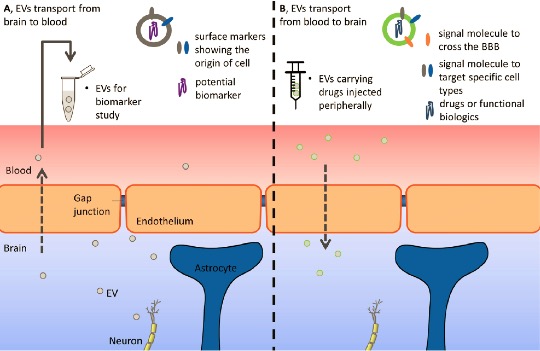Extracellular vesicles in neurological diseases
Extracellular vesicles (EVs) are membrane-bound particles released by most cell types. Both exosomes and microvesicles are included in this classification. They participate in cell signaling, and have recently been implicated in the progression of neurodegenerative diseases. We are studying EVs in several major capacities:
As a source of brain-derived biomarkers: We and our colleagues developed a novel strategy for measuring brain-derived molecules without needing to directly access the brain. While brain-derived molecules are often exported from the brain, and can be identified in blood or cerebrospinal fluid, these signals are often masked by the high levels of peripherally-derived molecules. Our strategy is to isolate EVs carrying markers that indicate their cells of origin are within the brain. We then measure the cargo they carry, including proteins and micro RNA, to examine their disease-related changes.
As important players in the mechanisms of disease: Changes in extracellular vesicles are implicated as both causes and consequences of neurodegenerative disease. Our studies have highlighted differences in the secretion and contents of brain-derived extracellular vesicles in a number of diseases, including Parkinson disease and multiple system atrophy. Moreover, we have recently discovered effects of peripherally-derived extracellular vesicles on the brain itself, offering novel mechanisms that may contribute to diseases of the central nervous system.
As potential therapeutic agents: EVs can be transported between the blood and the brain, and are taken up by multiple cell types. This suggests the potential for EVs to be engineered to carry drugs or therapeutic biological agents into the brain, targeting specific cells. We are examining ways to target specific brain cell types using modified EVs.

Figure: Potential clinical applications utilizing the bidirectional transfer of EVs between the brain and peripheral blood
(from Shi et al, Prog Neurobiol 2019, 175: 96)